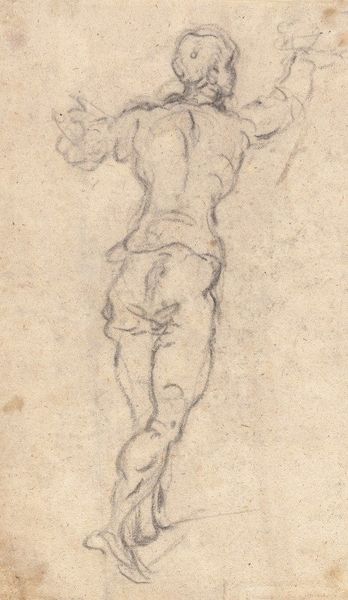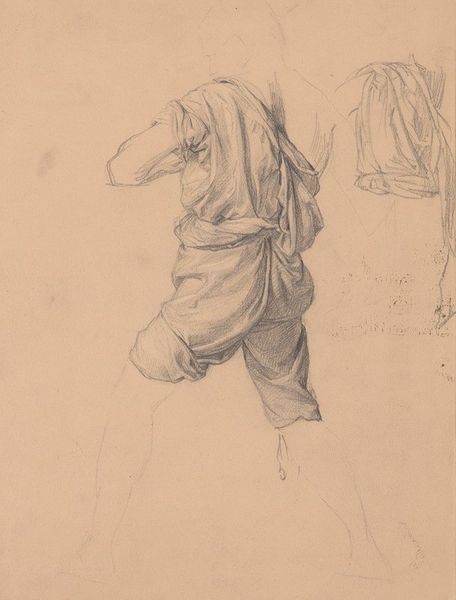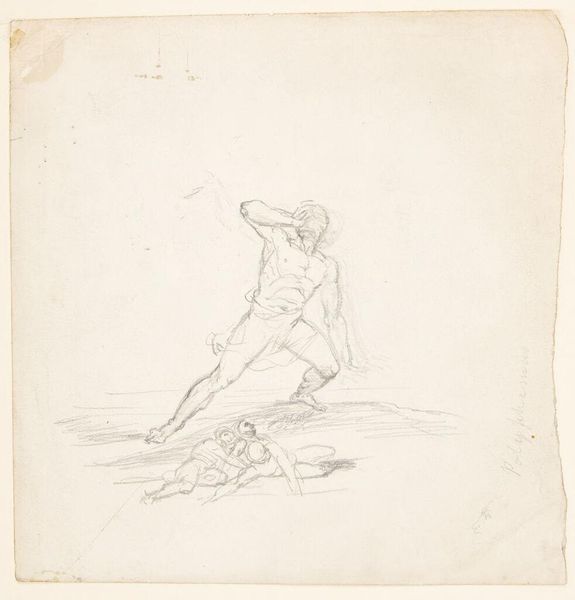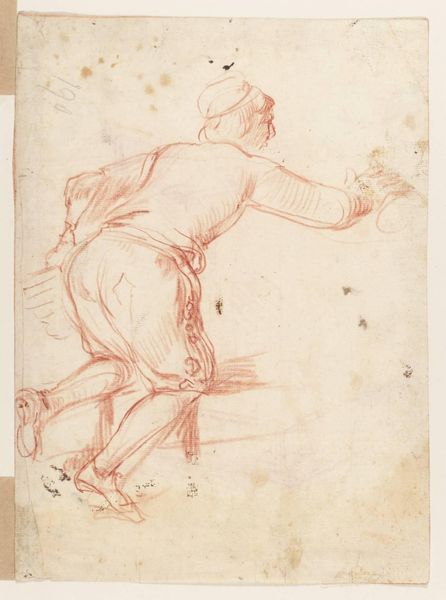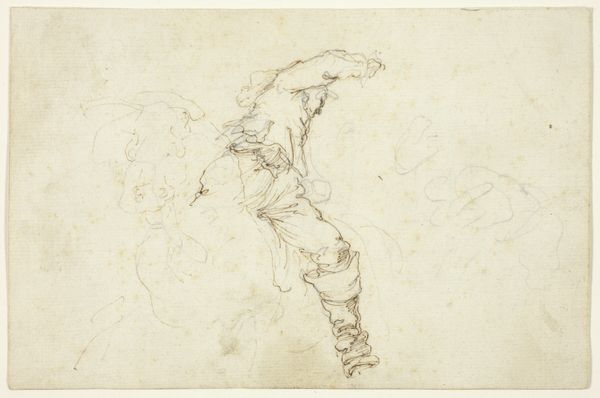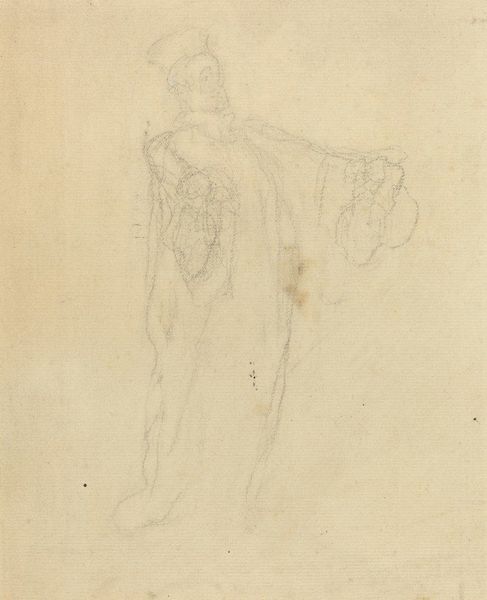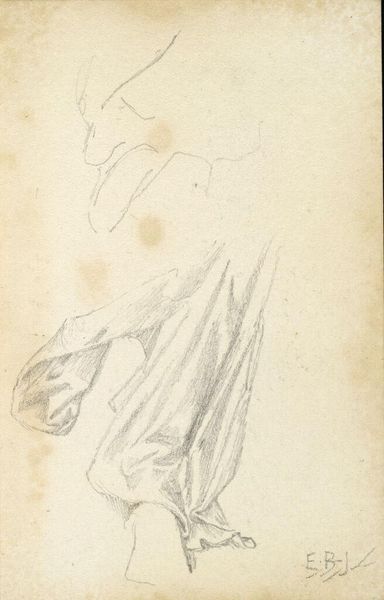
drawing
#
portrait
#
drawing
#
figuration
#
underpainting
#
line
Copyright: Public Domain: Artvee
Curator: I’m drawn to the supplicating posture; there’s a palpable vulnerability that the artist captures so directly. Editor: And a skillful economy of line to achieve it. This work, attributed to Isidore Pils and known as "Kneeling Woman," seems to be a preliminary sketch, dating back to the 19th century. The medium appears to be primarily red chalk on paper, judging by its color and texture. Curator: The title, though simple, brings to mind numerous intersectional interpretations, doesn't it? I can't help but see it through a lens of gendered power dynamics, the historical expectations of female piety and submission... Who is she praying to, or perhaps even begging? Editor: Indeed, it would be fascinating to trace Pils’ influences and examine the labor that produced this image, because I see this image as more likely connected to the labor of devotion and the act of kneeling. The very act of sketching suggests rapid execution; how does the artist work to evoke those meanings? Curator: Perhaps, but also consider how the woman's pose invites readings beyond pure devotion. Her raised hand, for instance – is it a plea, or a gesture of defiance? Is she seeking divine intervention, or pushing back against earthly constraints? Her covered head is also of note; where does the constraint become tradition or custom? Editor: It also invites us to speculate on the material and the artist's approach: the relative cost of the red chalk, the type of paper used…was this sketch for personal edification or something destined for a larger work that might then engage industrial processes? The line-work feels intentionally unfinished, as well, creating an ambiguity of both process and intention. Curator: The ambiguity is definitely key here; there is so much that we are left to question. Looking at the figure within a broader socio-political context really adds weight to even these spare lines, even these underpinnings of this artwork. Editor: Absolutely. It is the connection between the sketch, materials, and social implication of the "underpainting" process that fascinates me the most. Curator: Thank you for sharing your thoughts; it’s enlightening to reexamine pieces such as this through your insight. Editor: Likewise; this conversation enriches the layers of meaning behind it for me, and prompts new questions for consideration.
Comments
No comments
Be the first to comment and join the conversation on the ultimate creative platform.
